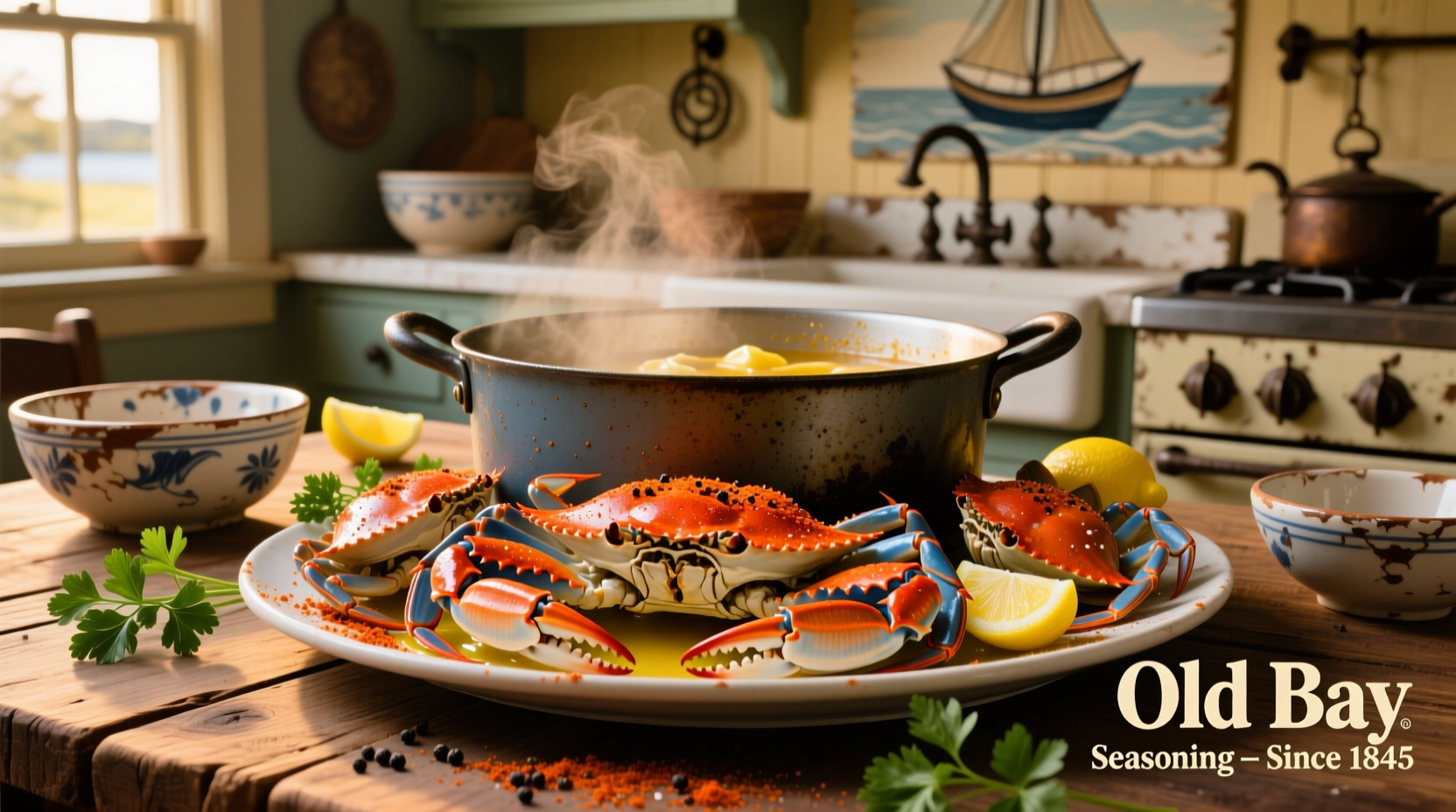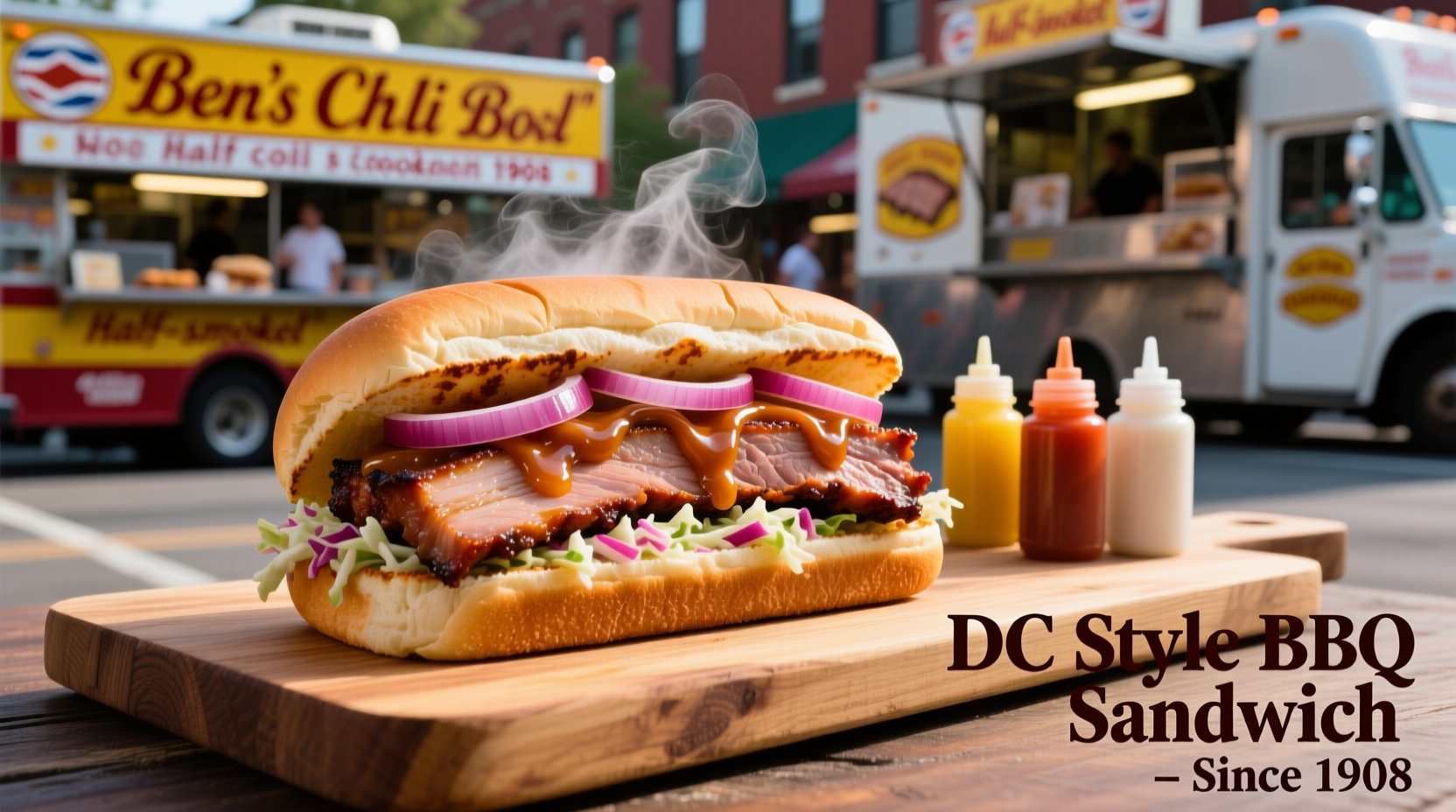Washington DC is renowned for its half-smoke sausage, Chesapeake Bay blue crabs, Ben's Chili Bowl's iconic chili dogs, mumbo sauce, and the nation's largest concentration of authentic Ethiopian restaurants outside of Africa. These distinctive foods reflect DC's unique cultural blend of Southern US, African American, and immigrant influences.
Discover the authentic flavors that define America's capital city. Washington DC's culinary identity goes far beyond political power lunches—it's a vibrant fusion of regional specialties, immigrant traditions, and historical influences that have shaped the city's distinctive food culture for centuries. Whether you're planning a visit or simply curious about DC's gastronomic heritage, this guide reveals the must-try foods that capture the essence of the nation's capital.
The Historical Evolution of DC's Food Scene
Washington DC's culinary landscape has evolved dramatically since the city's founding. Originally shaped by Southern cooking traditions brought by enslaved Africans and Southern migrants, DC's food scene transformed with successive waves of immigration. The city's location on the Chesapeake Bay provided abundant seafood, while its status as the nation's capital attracted diverse populations that contributed to its distinctive food culture.
| Era | Key Culinary Influences | Signature Dishes Emerged |
|---|---|---|
| 1790-1860 | Chesapeake Bay seafood, Southern plantation cooking | Blue crab preparations, oyster stews |
| 1860-1920 | Post-Civil War migration, African American culinary traditions | Chili con carne adaptations, soul food staples |
| 1920-1970 | Great Migration, establishment of U Street corridor | Half-smoke sausage, DC-style chili dogs |
| 1970-Present | Ethiopian immigration, food trucks, culinary renaissance | Mumbo sauce, authentic Ethiopian cuisine, modern interpretations |
DC's Signature Foods You Must Experience
The Half-Smoke: DC's Official Sausage
No food represents Washington DC quite like the half-smoke—a distinctive coarse-ground pork and beef sausage with a spicy kick, typically served in a steamed bun with mustard, onions, and chili. Created in the mid-20th century by African American vendors along the U Street corridor, this culinary icon embodies DC's unique food culture. Unlike Chicago's hot dogs or New York's frankfurters, the half-smoke stands alone as DC's signature street food.
While Ben's Chili Bowl remains the most famous destination for half-smokes (serving them since 1958), locals know that each neighborhood offers its own interpretation. Some vendors use a higher ratio of beef to pork, while others incorporate unique spice blends. The authentic DC experience involves ordering your half-smoke "all the way"—topped with chili, mustard, and onions.
Chesapeake Bay Blue Crabs: A Seasonal Tradition
Though Maryland claims the blue crab as its state crustacean, Washington DC has deep historical ties to this regional delicacy. The Chesapeake Bay's proximity has made blue crabs a cornerstone of DC's culinary identity since the city's founding. During crab season (May-October), locals gather for steamed hard-shell crabs seasoned with Old Bay, or enjoy Maryland-style crab cakes featuring minimal filler to showcase the sweet, delicate meat.
According to the Maryland Department of Natural Resources, the Chesapeake Bay once produced 90% of the nation's blue crabs, though current harvests represent a fraction of historical levels due to conservation efforts. Despite this, DC restaurants continue the tradition with sustainably sourced crabs that remain central to the city's summer dining culture.

Mumbo Sauce: DC's Secret Condiment
Mumbo sauce (sometimes called "mambo" sauce) represents DC's culinary innovation. This sweet, tangy, slightly spicy red sauce emerged from the city's Chinese-American restaurant scene in the 1970s, created specifically for the DC market. While its exact origins remain debated, mumbo sauce has become an essential component of DC's food identity, particularly when paired with fried chicken.
Unlike generic sweet and sour sauces, authentic DC mumbo sauce contains a distinctive blend of vinegar, soy sauce, sugar, and spices that creates a complex flavor profile. Many establishments guard their recipes closely, but the sauce's popularity has spread beyond DC through food trucks and specialty grocery stores. For the authentic experience, try it with fried chicken wings from one of DC's neighborhood carry-outs.
Ethiopian Cuisine: DC's Global Culinary Claim to Fame
Washington DC boasts the largest Ethiopian community outside of Ethiopia itself, with more than 30 authentic Ethiopian restaurants concentrated primarily along U Street and in the Shaw neighborhood. This culinary treasure emerged following the 1980s immigration wave of Ethiopians fleeing political unrest, transforming DC into America's unofficial Ethiopian food capital.
Ethiopian dining offers a communal experience centered around injera (a sourdough flatbread made from teff flour) used to scoop up flavorful stews called wat. Signature dishes include doro wat (chicken stew), misir wat (spiced lentils), and kitfo (minced beef). The Ethiopian Embassy in Washington DC recognizes the city's Ethiopian restaurants as cultural ambassadors that have introduced authentic Ethiopian flavors to American diners nationwide.
Where to Experience Authentic DC Food Culture
While tourist-focused restaurants cater to visitors near the National Mall, the authentic DC food experience happens in neighborhood establishments that have served locals for generations:
- Ben's Chili Bowl (1213 U St NW): Since 1958, this U Street institution has served half-smokes to everyone from Duke Ellington to President Obama
- Dukem Ethiopian Restaurant (1714 U St NW): A DC staple since 1997 offering traditional coffee ceremonies and authentic stews
- Old Ebbitt Grill (675 15th St NW): DC's oldest saloon (est. 1856) serving Chesapeake Bay oysters and crab cakes
- Chinatown Carryout (609 H St NE): Famous for mumbo sauce-drenched fried chicken since 1976
- Joe's Seafood, Prime Steak & Stone Crab (750 14th St NW): Celebrated for Maryland crab cakes and Chesapeake specialties
Understanding DC's Food Culture Context
DC's culinary identity differs significantly from other American cities due to several factors:
- Transient population: As a city populated largely by temporary residents, DC's food scene constantly evolves with new influences
- Government influence: Diplomatic communities have introduced international flavors while federal workers seek familiar comfort foods
- Regional positioning: Located at the crossroads of the South and Northeast, DC blends culinary traditions from both regions
- Immigrant communities: Refugee populations, particularly from Ethiopia and Central America, have profoundly shaped DC's food landscape
Unlike cities with established culinary identities like New Orleans or Boston, DC's food culture remains dynamic and constantly evolving—a reflection of the city's role as America's living room where global influences converge.
Planning Your DC Food Adventure
For visitors planning to explore DC's culinary scene, timing matters. Summer brings fresh Chesapeake Bay crabs and outdoor dining, while winter features hearty soul food and Ethiopian stews perfect for cold weather. The annual DC Food Truck Festival in September showcases the city's mobile dining innovations, and Restaurant Week in January offers opportunities to experience high-end DC dining at accessible prices.
When exploring DC's food culture, remember that the most authentic experiences often happen away from the National Mall. Venture into neighborhoods like Shaw, Columbia Heights, and Petworth to discover the true flavors that define Washington DC—one half-smoke, one injera bread, and one crab cake at a time.
Frequently Asked Questions
What makes DC's half-smoke different from a regular hot dog?
DC's half-smoke is coarsely ground with a higher fat content than standard hot dogs, containing a blend of pork and beef with distinctive spices. It's typically spicier than regular hot dogs and has a smokier flavor profile due to the smoking process. The traditional preparation involves serving it steamed in a bun with chili, mustard, and onions.
Where did mumbo sauce originate in Washington DC?
Mumbo sauce originated in DC's Chinese-American carryout restaurants during the 1970s, specifically created for the local market. While its exact origin remains debated, it emerged from the H Street NE corridor where Chinese immigrants adapted their recipes to local tastes, creating this sweet, tangy red sauce that became uniquely associated with DC's fried chicken.
Why does Washington DC have so many Ethiopian restaurants?
DC developed a large Ethiopian community following political unrest in Ethiopia during the 1970s and 1980s. As refugees settled in the Shaw and U Street neighborhoods, they established restaurants that introduced authentic Ethiopian cuisine to Washingtonians. Today, DC has the largest concentration of Ethiopian restaurants outside of Ethiopia itself, with more than 30 authentic establishments.
When is the best time to try authentic Chesapeake Bay blue crabs in DC?
The prime season for Chesapeake Bay blue crabs in DC runs from May through October, with the peak months being June, July, and August when the crabs are fullest. During crab season, many DC restaurants offer steamed hard-shell crabs with Old Bay seasoning, and crab cakes feature fresh, local crab meat with minimal filler.
What's the difference between DC mumbo sauce and Chicago's hot dog toppings?
DC's mumbo sauce is a sweet, tangy red sauce created specifically for fried chicken, while Chicago hot dogs feature a specific topping arrangement including yellow mustard, bright green relish, onions, tomatoes, pickle spear, sport peppers, and celery salt on a poppy seed bun. The two represent completely different regional specialties with mumbo sauce being uniquely DC and the Chicago-style hot dog being distinctly Midwestern.











 浙公网安备
33010002000092号
浙公网安备
33010002000092号 浙B2-20120091-4
浙B2-20120091-4